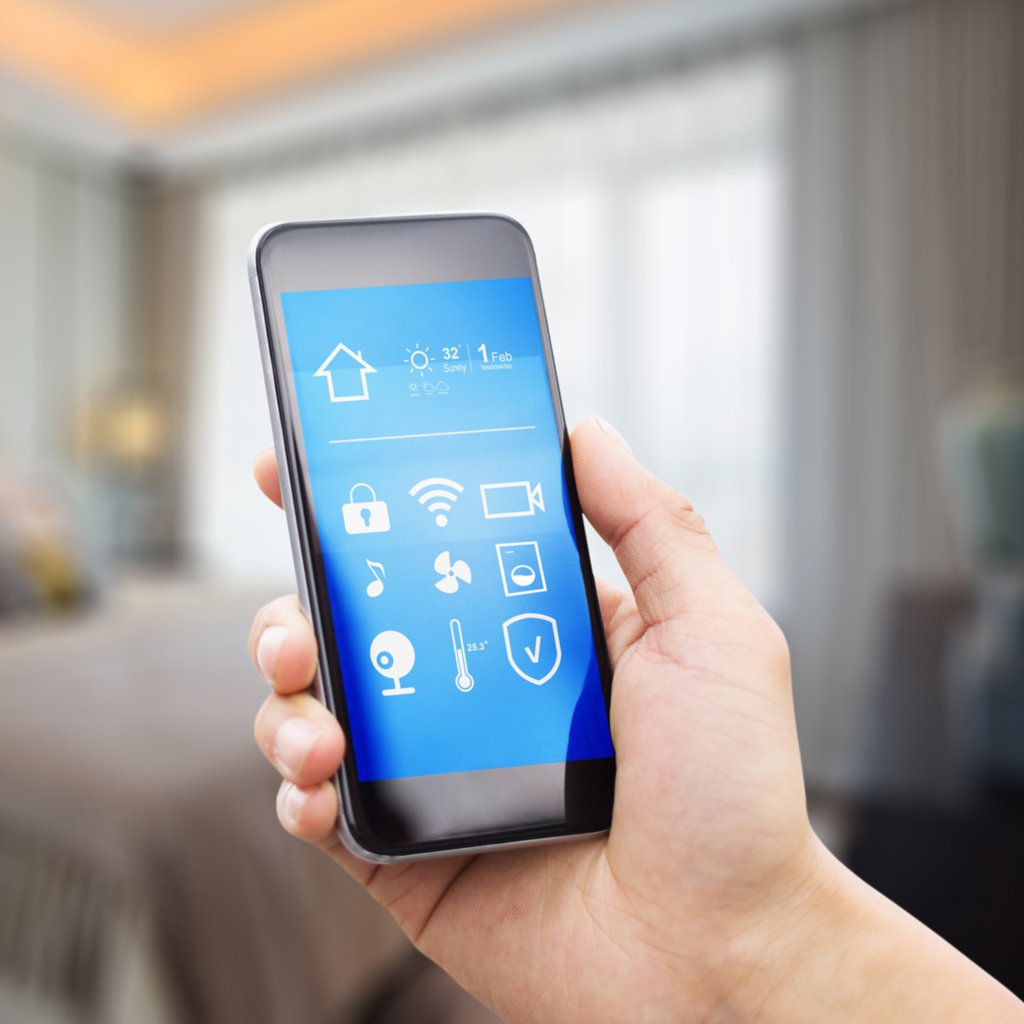Are we sacrificing security in the name of convenience?
As technology becomes more advanced, some of our security systems are able to be controlled without so much as pushing a button. You can remotely engage your system from your phone or shut it off with the sound of your voice. This can save some time, but as we lean more into smart technology, are we putting ourselves into a more vulnerable position? How do these systems affect residential, commercial, and high security spaces differently?
Benefits of Smart Security in Homes

Smart security systems, meaning systems connected to the internet that can be monitored remotely from a device like a smartphone, hold significant benefits. The biggest benefit is that you are made aware of things like a security breach as they happen through your phone. With a device like a video doorbell, you can be alerted to any motion by your door and potentially see an intruder before they’ve even triggered your internal alarm. The same can be true in commercial spaces, as smart security devices like cameras and motion sensors that communicate with your phone can help you differentiate between false alarms and real threats.
Devices like video doorbells and other external smart cameras can help you catch criminals in the act as well as give you video of them after the fact. These types of cameras ultimately offer a lot of peace of mind and can serve as a deterrent if a potential intruder sees them. Combined with a smart lock, you could potentially see when someone, like a cleaner or dogwalker, is at your door and unlock it without having to leave a key by your door that anyone could find.
Smart cameras and alarm systems will offer similar benefits in commercial spaces, like the ability to monitor any after-hours movement in your space. You can use smart locks to give door access to select employees without the risk of them losing a physical key. Some smart systems can even help you reduce energy costs. For example, if someone forgot to turn the heat off after leaving the building, you can adjust that remotely.
Risks of Smart Security in Homes and Best Practices
However, there is a danger of these security systems being hacked. If you link all your home security to a single account, you essentially give full access to your home to anyone who has your password. Because of this, it’s important to add extra layers of security through measures like two-factor authentication for logins. Thoroughly research the systems you intend on buying, as some will be safer than others. Some devices have encrypted data that will help to prevent someone being able to hack them or take them over. Also be aware that some devices require the internet to operate, so if you don’t have reliable internet, avoid systems that need it.
If you’re going to have a variety of smart devices, make sure they’re on multiple separate accounts or networks. That way, if one is compromised, it won’t fully compromise your complete home security. Be aware that if you use devices that are voice activated and only respond to your voice, someone could potentially record your voice and use it to control the device, or even fake it using deepfake audio software.
When securing your home, it’s important not to lose focus on what’s important. While many of these products offer great convenience, allowing you to integrate and automate so many things with your phone, your priority always has to be security over simplicity.
This is true in commercial spaces as well. If you’re going to use any automation features, it’s best to keep them managed on a separate platform. The less you can give any potential hacker access to in a single swoop, the better. You may also want to consider skipping the smart tech entirely here, as a manual approach will eliminate one more possible security risk.
For high-side security like SCIFs and SAPFs, the options for security systems are more limited. They have a stringent set of requirements set out in documents like the ICD 705 Technical Specifications, or Tech Spec. These options are not only more limited due to the amount of testing they have to undergo and pass, but they’re also significantly more expensive, costing around three to four times as much as systems for typical residential or commercial spaces. Because of these stricter standards, high-security facilities cannot use smart technology due to concerns including stopping unintended emanations from leaving the facility through TEMPEST mitigations.
These requirements are unlikely to change much in the future, so there will always be at least some need for non-Wi-Fi-enabled security devices. These are unique concerns for secure facilities, so they won’t be something you need to worry about when securing your home. Unlike residential spaces, secure facilities are high priority for alarm monitoring companies, so they’re also more likely to receive a quick response.
If you’re looking into securing your business, Adamo offers physical security services. Let our team of experts simplify your security process and give you complete peace of mind that your business’s security is in good hands.



